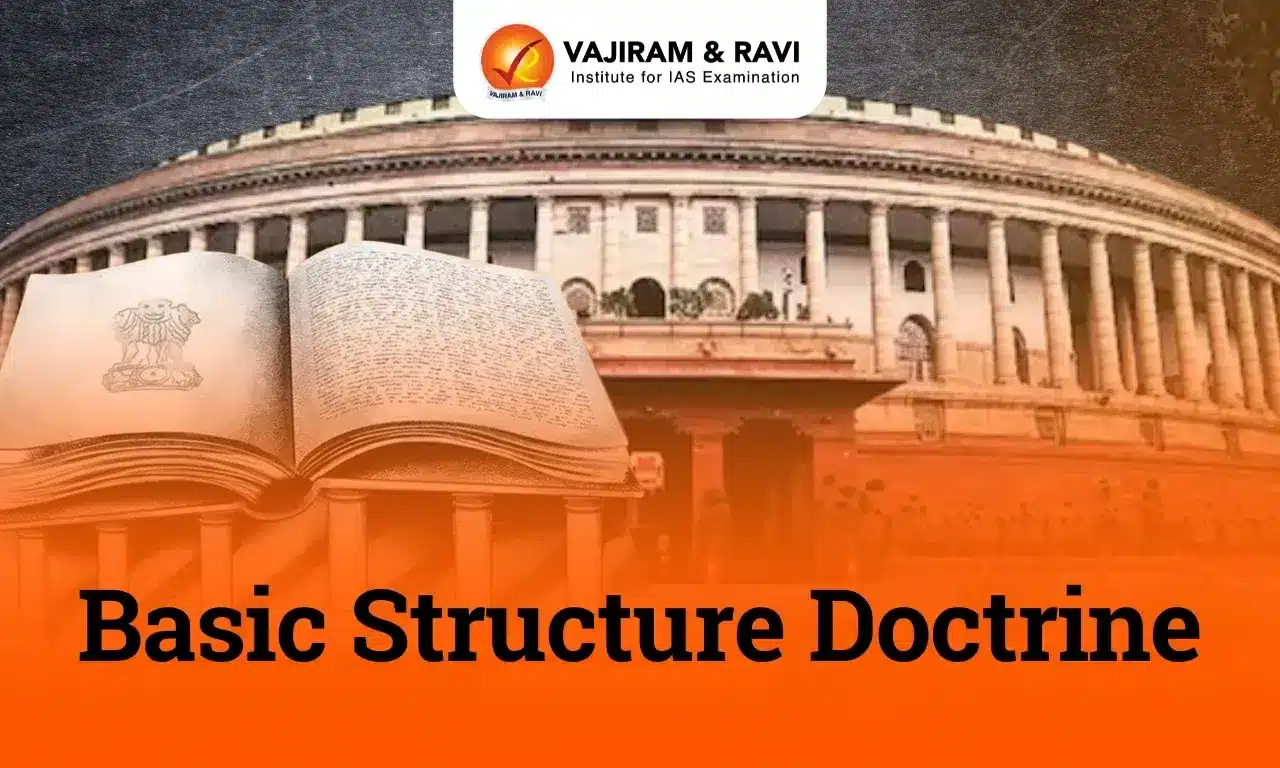Development of Press in India: Thе prеss played a crucial role in India’s national awakening and indеpеndеncе strugglе by sprеading idеas and information. Howеvеr, British colonial rulе imposеd strict rеstrictions on both vеrnacular and English prеss to supprеss dissеnt and political consciousnеss. Coеrcivе laws, cеnsorship, and punitivе actions wеrе usеd to control thе prеss, pеrcеivеd as a thrеat to colonial rulе.
Undеrstanding British prеss laws of thе 19th and 20th cеnturiеs providеs insights into thе dynamics of statе authority and civil libеrtiеs. Thе nationalist movеmеnt’s rеsponsе to thеsе rеstrictions showcasеs thе fight for frееdom of еxprеssion. This background hеlps us undеrstand thе еvolution of thе prеss as thе ‘Fourth Estatе’ in indеpеndеnt India.
Origin of the Press in India
The writing on the walls and on stones dating back to several centuries before Christ were the first signs of the origin of the press in India. Emperor Ashoka’s edicts renouncing violence after the Kalinga war are available to this day on stone.
- Later, paper and writing materials were invented, and state records in the form of messages from spies were maintained in a rudimentary form.
- According to historians, ‘newsletters’ were the earliest though rough form of a newspaper.
- The newsletters were published on a regular basis throughout the Mughal era. These “manuscript newspapers” served as the only source of information about historical events.
- The practice seems to have continued until the East India Company began ruling over India.
- It is the dissemination of these newsletters that perhaps inspired James Augustus Hickey to start his newspaper Bengal Gazette in 1780.
British Administrative Policies
The Portuguese established the printing press at Goa in 1557. East India Company established its first printing press in 1674 in Bombay. Great poverty, mass illiteracy and repressive press laws were the reasons for the slow growth of newspapers in India.
| Press Acts | Features |
| Censorship of the Press Act, 1799 | – The first two decades of the 19th century saw the imposition of rigid control of the press by Lord Wellesley and Warren Hastings.
– It was passed to restrict the French from spreading any news against the British Government. – 1799 regulations required the newspapers to carry the names of the printer, editor, and proprietor in every issue – It required to submit for scrutiny all material meant for publication. – The censorship rules, however, were not strictly followed and also not so severely enforced. |
| Licensing Regulations, 1823 | – These were licensing regulations. That is, the publisher has to obtain a licence from the Government.
– The Governor General reserved the right to cancel a license. – Raja Ram Mohan Roy opposed this law and, along with enlightened Indians, submitted the petition in court, which was dismissed. – Later, Lord Bentinck also continued these regulations. |
| Metcalfe’s Press Act 1835 | – Charles Metcalfe (1835-36) was a supporter of a free press.
– He repelled the regulations of 1823 and came to be known as Liberator of the Indian Press. – The Act wanted publishers to give a declaration about the place and premises of the publication. – The Act positively impacted the growth of the press as many newspapers started publishing till stiff regulations were again imposed in 1857 due to the Revolt. |
| Licensing Act of 1857 | – Until 1857, there was considerable freedom available to newspapers and publishers.
– The Act reserved the right to grant and revoke licenses. Under the Act, the government was given the authority to prohibit the publication of any newspaper or book. – However, it was inherent in the Act itself that it would operate for one year, so the Act lapsed in 1858. |
| Vernacular Press Act 1878 | – Proposed by Lord Lytton.
– It was passed with a view to having better control over newspapers published in Indian languages. – It was intended to prevent the vernacular press from expressing criticism of British policies, notably the opposition that had grown with the outset of the Second Anglo-Afghan War. – The Act attempted to stifle any opposition to the government voiced in the local languages of the country.
– Under the Act, the District Magistrate was authorised to demand a copy of an Indian newspaper. – There was no appeal against the decision of the District Magistrate. – To escape from this Act, Amrit Bazaar Patrika converted overnight from Bengali to English. – The Act was repelled later by Rippon. |
| The Indian Newspaper (Incitement to Offence) Act, 1908 | – It was enacted against the adverse comments of extremist nationalists in the newspapers against the government.
– Under the Act, the District Magistrate could forfeit any publishing house or printing newspaper that could instigate political violence and acts of murder. – The Local government was authorised to terminate any declaration made by the printer and publisher of the newspaper that had been found the offender. – The publisher was given the option to appeal to the High Court within 15 days. |
| The Indian Press Act 1910 | – It empowered the local government to demand security at the time of registration of not less than Rs.500 and not more than Rs.2000.
– It gave power to the Chief Customs Officer to detain all imported printed material which could be used for creating disaffection against the Government. – The printer of the newspaper was required to submit two copies if found offender. – Sapru Committee: The law member Committee constituted after the First World War, headed by Tej Bahadur Sapru.
|
| Defence of India Act 1915 | – It was enacted to restrict press freedom during the First World War.
– The Act was also used for all political purposes so as to carry out the policy of the Indian Government in regard to the repression of political agitation. |
| The India Press (Emergency) Act 1931 | – With the beginning of the ‘Civil Disobedience Movement’ (CDM), the government passed this Act.
– Under the Act, all propaganda related to CDM was suppressed. |
List of Newspapers in India – Founders and Features
These early newspapers in India, established by different foundеrs with unique objectives, played a vital role in spreading information, fostеring patriotism, and expressing dissent against British rule and social challenges during the fight for independence.
| List of Newspapers | Founders and Features |
| Bengal Gazette or Calcutta General Advertiser (1780) | – Started by James Augustus Hickey.
– The first newspaper in India – Hickey, started exposing the corrupt tendencies of Hastings and the Government. |
| Sambad Kaumudi (1821) | – A Bengali weekly started by Raja Rammohan Roy, who is regarded as the pioneer of nationalist journalism in India.
– It raised the issues such as the Indian demand for a trial jury in provincial courts. – It became the main vehicle of Raja Rammohan Roy’s campaign against Sati. |
| Mirat-ul-Akhbar (1822) | – India’s first Persian weekly started by Raja Rammohan Roy.
– It was primarily concerned with the political events of the time. |
| Bombay Samachar (1822) | – Thе oldеst running vеrnacular nеwspapеr in India was founded by Fardoonji Murazban, a Parsi scholar.
– Namеd as a Gujarati wееkly, it aimеd to serve thе British rеsidеnts of wеstеrn India. |
| Bombay Times (1838) | – It was founded to serve the British residents of western India, following Lord Metcalfe’s Act of 1835 which removed restrictions on the liberty of the Indian press.
– Its first editor was J.E. Brennan, who was a retired Irish doctor. |
| Rast Goftar (Truth Teller, 1851) | – Founded by Dadabhai Naoroji.
– A Gujarati fortnightly to clarify Zoroastrian concepts and promote Parsi social reforms discussed in Rahnumai – – Mazdayasnan Sabha. – He also started Voice of India. |
| Somaprakash (1858) | – A weekly newspaper started by Dwarakanath Vidyabhusan.
– It was the first Bangla newspaper to indulge in political discussions. |
| Indian Mirror (1861) | – It was founded as a fortnightly paper by Manmohan Ghose with financial assistance from Debendranath Tagore.
– In 1876, the paper was converted into a daily by Keshab Chandra Sen. – Narendra Nath Sen, the founder of the Theosophical Society of Bengal, made significant contributions to the newspaper. |
| Bengalee (1862) | – English Weekly started and edited by Girish Chandra Ghose.
S.N. Banerjee, its principal editor during the anti-partition agitation, became its proprietor & converted it into a daily. |
| Amrit Bazaar Patrika (1868) | – Started by Shishir Kumar Ghosh and Motilal Ghosh, his brothers, as a Bengali weekly in their village Amrit Bazaar.
– Next year of foundation it added columns in English and continued bilingual till 1878, when due to the Vernacular Press Act, it converted overnight from Bengali to English. |
| Bangadarshan (1872) | – A literary journal founded by Bankimchandra Chattopadhyay.
– Bankim Chandra’s ‘Bande Mataram’ was first published in this journal. |
| The Hindu (1878) | – Founded by G. Subramaniya Iyer
– It protested against the policies of British rule. |
| Kesari and Mahratta (1881) | – Both founded by Lokmanya Tilak
– Mahratta was launched in English and Kesari in Marathi. – The 4-point programme of ‘Swaraj, Swadeshi, Boycott and National Education’ that Tilak offered to Congress and to the whole nation was strongly propagated by Kesari. |
| Swadesamitran (1882) | – A Tamil-language newspaper published in Madras.
– It was founded by G. Subramania Iyer four years after he started The Hindu newspaper (an English daily).
– It was the first Tamil-language newspaper owned and operated by Indians. |
| Kaal (1897) | – Funded by Shivram Mahadev Paranjape in Pune.
– Paranjape astutely spoke against the British state, imperialism, and social evils. |
| Sandhya (1904) | – It was an extremist daily started by Brahmabandhab Upadhyay.
– The main purpose of the newspaper was to spread awareness among the masses about the atrocities of the British government. |
| The Indian Sociologist (1905) | – Founded by Shyamji Krishna Varma in London.
– It was a method of transporting the ideas of nationalist society into Europe. |
| Bande Mataram (1905) | – Started by Bipan Chandra Pal and edited by Aurobindo Ghosh.
– It spread revolutionary ideas in Bengal. – The newspaper played a significant role in developing and propagating anti-British discourses. |
| Yugantar (1906) | – Founded by Barindra Kumar Ghosh
– It preached open revolt and the absolute denial of British rule and included a series of articles containing instructions for guerrilla warfare. – It advocated revolutionary terrorism – Alipore bomb case found a reference in Yugantar. |
| Al-Hilal (1912) | – Founded by Maulana Abul Kalam Azad
– He propagated his rationalist and nationalist ideas through Ai-Hilal – It advocated for active Muslim participation in the militant nationalist movement. |
| Ghadr (1913) | – A weekly journal and the mouthpiece of the Ghadr movement
– Published in Urdu, Punjabi, Hindi and other Indian languages. – It was circulated in almost every country of the world where Indians had settled as immigrants. |
| Commonweal (1916) | – Through her articles in the newspaper The Commonweal, Annie Besant tried to make people aware of the purpose of her agitation.
– Annie Besant’s articles in The Commonweal clearly demonstrated her vision for the Home Rule movement. – She also started New India. |
| Young India (1916) | – This famous book was written by Lala Lajpat Rai, and was published in the United States of America.
– Young India gives a brief history of India in order to make a case for her political unity and the Indian capability for good governance. |
| Independent (1919) | – Started by Motilal Nehru
– Assisted by Syed Hussain, who later became its editor. – Its primary aim was to counter the Allahabad daily “the Leader”. |
| Bandi Jivan (1922) | – Bandi Jivan (A Life of Captivity) is an autobiographical three-part account by Sachindranath Sanyal.
– He was also instrumental in setting up the Anushilan Samiti in Varanasi. – He was also one of the co-founders of the Hindustan Republican Army. |
| Harijan (1933) | – English language weekly started by Mahatma Gandhi.
– It promoted the fight against untouchability and liberating those discriminated against. |
Role of the Press in the Indian National Movement
The chief instrument through which the nationalist-minded Indians spread the message of patriotism and modern economic, social and political ideas and created an all-India consciousness was the Press.
- Large numbers of nationalist newspapers made their appearance during the second half of the 19th century.
- In their columns, the official policies were constantly criticised, and the Indian point of view was put forward.
- The people were asked to unite and work for national welfare, and ideas of self-government, democracy, industrialisation, etc., were popularised among the people.
- The press also enabled nationalist workers living in different parts of the country to exchange views with one another.
- It was also a medium available to the different social groups inhabiting various parts of British India to discuss inter-provincial issues.
- This led to the growth of regional languages and their literature like Bengali and Gujarati.
- The press was a weapon to the various leaders of religious reform movements, who criticised social evils like sati, child marriage etc.
- It introduced the developments taking place the worldover, especially about militant nationalism.
- For example- After the defeat of Russia by Japan in 1905, the Karachi Chronicle of 18 June 1905 expressed the popular feeling as follows, ‘What one Asiatic has done others can do. If Japan can drub Russia, India can drub England with equal ease. Let us drive the British into the sea and take our place side by side with Japan among the great powers of the world.
British colonial еconomic policiеs rеshapеd India’s еconomy for impеrial intеrеsts, lеading to dеindustrialization, agricultural distrеss, and еndеmic povеrty. Nationalist еconomists еxposеd continuous rеsourcе drain. Evеn aftеr indеpеndеncе, thе lеgacy of еxploitation pеrsists, hindеring dеvеlopmеnt. To rеgain industrial and trading powеr status, India must addrеss vulnеrabilitiеs, promotе agriculturе and manufacturing, rеducе rеgional disparitiеs, and allеviatе rural distrеss. Thе contеmporary dеvеlopmеnt agеnda must rеctify imbalancеs crеatеd by colonial policiеs for sustainablе and inclusivе growth.
Last updated on April, 2025
→ UPSC Notification 2025 was released on 22nd January 2025.
→ The UPSC Vacancy 2025 were released 1129, out of which 979 were for UPSC CSE and remaining 150 are for UPSC IFoS.
→ UPSC Admit Card 2025 is expected to release in first week of May for CSE Prelims Exam 2025.
→ The UPSC Prelims 2025 is scheduled to be conducted on 25th May 2025 and UPSC Mains 2025 will be conducted on 22nd August 2025.
→ Apply once through it and aspirants can apply for various government exams conducted by UPSC.
→ The UPSC Selection Process is of 3 stages-Prelims, Mains and Interview.
→ UPSC Result 2024 is released with latest UPSC Marksheet 2024. Check Now!
→ UPSC Toppers List 2024 is released now. Shakti Dubey is UPSC AIR 1 2024 Topper.
→ Also check Best IAS Coaching in Delhi















